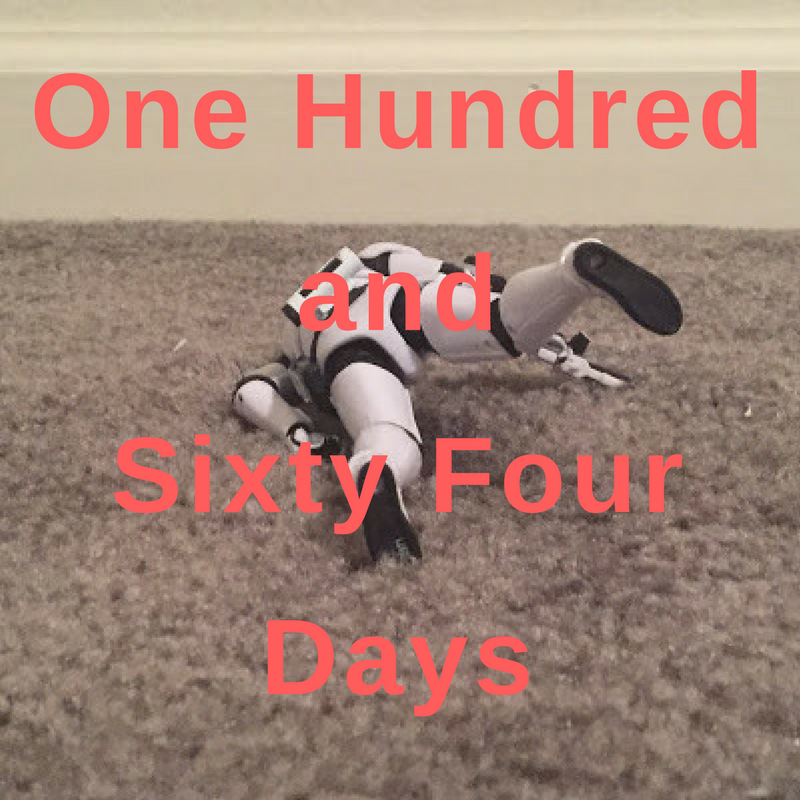(* Yes, that is perhaps the most obscure pun I've ever made on this blog.)
I'll set the scene:
The early 90s was a time of almost unprecedented success for the mainstream American comics industry. Hot titles were typically selling half a million copies per month, and special "event" comics were regularly selling in multiples of millions. It was a pretty heady time. And, for historical perspective, these weren't 10-cent issues of Dell Four Color - comics back then cost at least $1.25, and some series with higher production values cost as much as $2. I remember, at the time, it seemed almost criminal to charge $1.95 for a regular 32 page comic - just a year or so previous, Marvel & DC's annuals had cost $2, and those were something like three times as big as a regular issue.
So, lots of money being spent on comics, and lots of excitement as well. In the early 90s, kids and teens entertainment was still fairly deracinated, tame stuff - the Teenage Mutant Ninja Turtles cartoon, Saved by the Bell, The Little Mermaid was huge, stuff like that. People back then were already complaining about the growing crassness of kids entertainment, but it was all still fairly PG. Folks complained if there was so much as a fart joke in a Disney movie. Just a few years later, Disney movies like A Bug's Life would incorporate coprophilia gags. Times changed fast, and then the president got a blowjob.
Why this digression? Well, even though it doesn't seem like that long ago, the early 90s was still an entirely different world from the world we know today. The Simpsons was seen as a strange, counter-cultural, anti-family perversity - The Simpsons! Is it even possible to imagine, nowadays, a more universally beloved cultural touchstone - practically a cornerstone of modern American society - than The Simpsons? It was a time when politicians could still get away with name-chacking The Waltons in an unironic fashion. People still cared about things like Murphy Brown having a baby out of wedlock - how bizarre is that to anyone born after 1995, for whom movies like Junoi are considered heart-warming family fare? Yeah, there was schlock and there was also transgression - Hellraiser came out in 1987, after all - but it was still a remarkably kid-friendly world, with clear distinctions between kids media and grown-up media. Things like the Nightmare on Elm Street and Friday the Thirteenth movies were popular with little kids precisely because they were taboo in a way that I don’t really think we still have in today’s culture (plus, plainly cartoony and ghoulish in a formulaic manner that undoubtedly appealed to the young, just like Joe Camel). I don’t want to overemphasize the point because it would be easy to dispute anecdotally, but those who were alive back then should know what I’m talking about: things were slightly different, and for anyone under the age of about 16, access to racy or violent media was extremely curtailed. There was no 24-hour pornography machine in the living room, and mom and dad would probably think real hard before taking Jr. to see Terminator 2 (maybe even – gasp! – go see the movie themselves beforehand).
Imagine, then, being a kid in this environment. Imagine becoming hep to a form of entertainment that - for the most part - existed below the radar of most parents, featured increasingly frank depictions of sexual titillation, extreme violence and borderline sociopathy. Is it any wonder that X-Force hit the nation’s youth like a ton of bricks? For God’s sake, it was like they were taking a needle full of adrenaline and jabbing it straight into the libido of every 12-year-old boy in America. Back when porn and sexualized media were still fairly well-guarded, it was pretty amazing to pick up an issue of Uncanny X-Men and read Chris Clarement’s sexed-up stories – so steeped in S&M and fetish conventions that the creators themselves probably didn’t even realize it at that point – with special attention paid to Marc Silvestri and Jim Lee’s X-babes, and of course Todd McFarlane’s ungodly pneumatic Mary Jane. (Early Marc Silvestri still holds up as some of the most remarkably sexy superhero art ever drawn – partly because he knew how to make his men nearly as sexy and idealized as women, but also partly because, well, Madelyne Pryor as the Goblin Queen:
Anyway.)
What could DC do to compete with this? The revolution in increasingly sexualized and violent content that Marvel was riding all the way to the bank had left DC behind entirely. It is not without significance that of the original seven Image founders, three of them had begun their careers as journeymen artists on mid-list DCU titles – Rob Liefeld, Erik Larsen and Todd McFarlane, on Hawk & Dove, Doom Patrol and Infinity, Inc., respectively. So, not only did DC not have anything near the fanatically popular artists Marvel (and later Image) had, but they were seen – with good reason at the time – as being merely the “farm team” for major-league talent, a place where hot artists got their start before moving on to bigger and better things. DC was, for lack of a better word, staid. There was a period after the advent of Image where DC moved from being the rock-solid #2 in the American industry, to a distant #3. At the time it was hard to predict just how quickly the wheels would come off Image’s initial push, so it was not inconceivable that the publisher of Superman, Batman and Wonder Woman might be permanently eclipsed by the publisher of Spawn, Brigade and Cybernary.
Take a look, for comparisons’ sake, at the state of the comics industry circa summer 1991, the high-water mark of Marvel’s early 90s market dominance.
X-Force #1, cover-dated August 1991:
Spider-Man #13, cover-dated August 1991:
Uncanny X-Men 279#, cover-dated August 1991:
And now, Batman #467, cover-dated August 1991:
Superman #58, cover-dated August 1991:
New Titans #78, cover-dated August 1991:
Now, this is in no way intended to be an aesthetic judgment on the above comic books – but take a look and tell me, if you were ten years old in 1991, would you have given those DC books a second look? They aren’t bad, by any means, in fact, they probably have more in the way of solid craftsmanship to offer than any of the Marvel books with the possible exception of Claremont & Lee’s X-Men. But still – these books are the product of a corporate culture that was left totally flat-footed by a sudden change in the marketplace, and scrambling to catch up left them looking even worse. I mean, the then-new Tim Drake Robin was probably the closest thing DC had to a “hot” character, but he was still stuck in some resolutely square stories. I mean, a hot chick with an eye patch and a missile launcher? Maybe if Rob Liefeld drew it, but drawn by someone with at least a passing familiarity with human anatomy, the concept falls flat. And who the hell is that giant hobbit attacking the Titans? (Yes, I know it’s Jericho, don’t scream at me in the comments.) The Titans were the closest thing DC had to an X-Men level supergroup – and they even tried to pull an “X-Force” with the invention of the Team Titans the following year – but the book had obviously seen better days. Attempts at introducing a convoluted X-Men-lite Days of Future Past-retread storyline in order to launch a new spin-off team spearheaded by Leprechaun Cable was rather – well – shall we say, misguided?
In case you missed it the first time around, here’s Leprechaun Cable:
So, what did DC have? Well, the one real and undisputed asset they had in a crowded market - filled with flashy, new-fangled hyper-violent super-soldiers with impossibly round plastic breasts and razor-ship knives growing out of their nipples - was the characters themselves, the proverbial Crown Jewels of super-hero comics. Superman was still Superman, and Batman was still Batman, and no amount of mediocre or boring stories have ever been able to strip them of their premium, blue-chip status – because God knows, the company has tried.
They had the characters that everyone knew, and along with that they had the then-55-odd years of accumulated continuity that went with them. They had, in addition to Superman, Lois Lane and Perry White and Jimmy Olsen and Lana Lang and Lex Luthor and all that jazz – maybe changed a bit from, say, 1955, but the overall shape remained the same. Given that, is it any wonder that DC’s editorial culture had become far more conservative, static and editorially-driven even than Marvel?
Marvel became so dramatically successful at the time because they lucked into a crop of young artists with an intuitive feel for what would appeal to kids – some of them, as with Rob Liefeld, weren’t that far from the demographic themselves. Marvel was smart enough – or, given what happened, dumb enough – to realize that they could reap incredibly rewards by essentially letting the madmen run the asylum: allowing the artists to follow their eccentricities and preoccupations to their logical conclusions, with all the requisite problems that entailed. No more sending shoddy anatomy and horrid foreshortening down to the Bullpen to be tweaked, that kind of shit was what the kids wanted. No more time spent building long-term plots and sub-plots and supporting characters, lets just introduce a bunch of cyborgs with pouches and multicolored biker jackets, who all hate each other for unrevealed reasons that probably will never actually be revealed. It got the pulse racing in eight-to-fourteen year-olds across the country, is what it did.
DC couldn’t do that. Looking back at the Superman books, they didn’t have a superstar creator among them (Dan Jurgens would be briefly elevated to the status of superstar by virtue of the fact that he was the man who actually killed Superman), and the company’s editorial culture actively discouraged that type of star-system. The stars at DC were the folks who had been there for years and come up through the ranks by being team players. Ironically, DC had a better record for cultivating top-shelf talent in the form of writers like Alan Moore, Neil Gaiman and Grant Morrison, but that has more to do with the fact that DC felt comfortable stretching the limits, content-wise, of what they allowed their marginal-selling tertiary books to get away with, in addition to the historical accident that they just happened to be in the right place at the right time to take advantage of a historically gifted group of up-and-coming British writers. (Let’s have fun for a minute and imagine how the comics industry would have looked if Len Wein hadn’t stumbled upon Moore’s work when he did – say, if Jim Shooter had snapped up the young turk who was doing such great work in their UK offices and given Moore a poor-selling book like Ka-Zar or Dr. Strange.)
But a superstar writer is a different breed than a superstar artist. Writers, even the most prima-donna “artiste” imaginable, by definition have to be team-players, at least to some extent, or their comics would never move past script stage. Artists on the other hand can exercise a disproportionate (or, as the Image founders would have said, long-overdue) influence over the finished product. A popular artist can force out the writer who had almost single-handedly defined the company’s number one title for seventeen years. A popular artist can have entirely new series created strictly as a spotlight for their own talents. Most importantly - a popular artist can leave when he realizes he could be making all that money by himself.
DC didn’t have to worry about that - and in any event, even when they did piss-off Alan Moore, he didn’t drop everything and immediately go into direct competition with Superman. But Marvel’s problem was their problem, too, because while the advent of Image meant that the overall pie got a lot bigger, DC’s piece of the pie got a lot smaller. The long-term mismanagement of Marvel’s star system – the mismanagement that resulted in the creation of Image - probably created just as many headaches for DC as for Marvel. Suddenly, there was a new arms’ race in the comics world, and DC was stuck between two nuclear-armed superpowers with only a handful of muskets and horse cavalry with which to protect their territory.
All they had left was a massive stunt so shocking that no one ever even imagined they’d have the balls to pull it off. But, pushed up against the wall, facing commercial irrelevancy and rapidly-changing tastes, you could almost say their hand was forced . . .
More later, and more on how the cover triangles were a crucial element of DC’s return from the cusp of oblivion.





No comments :
Post a Comment